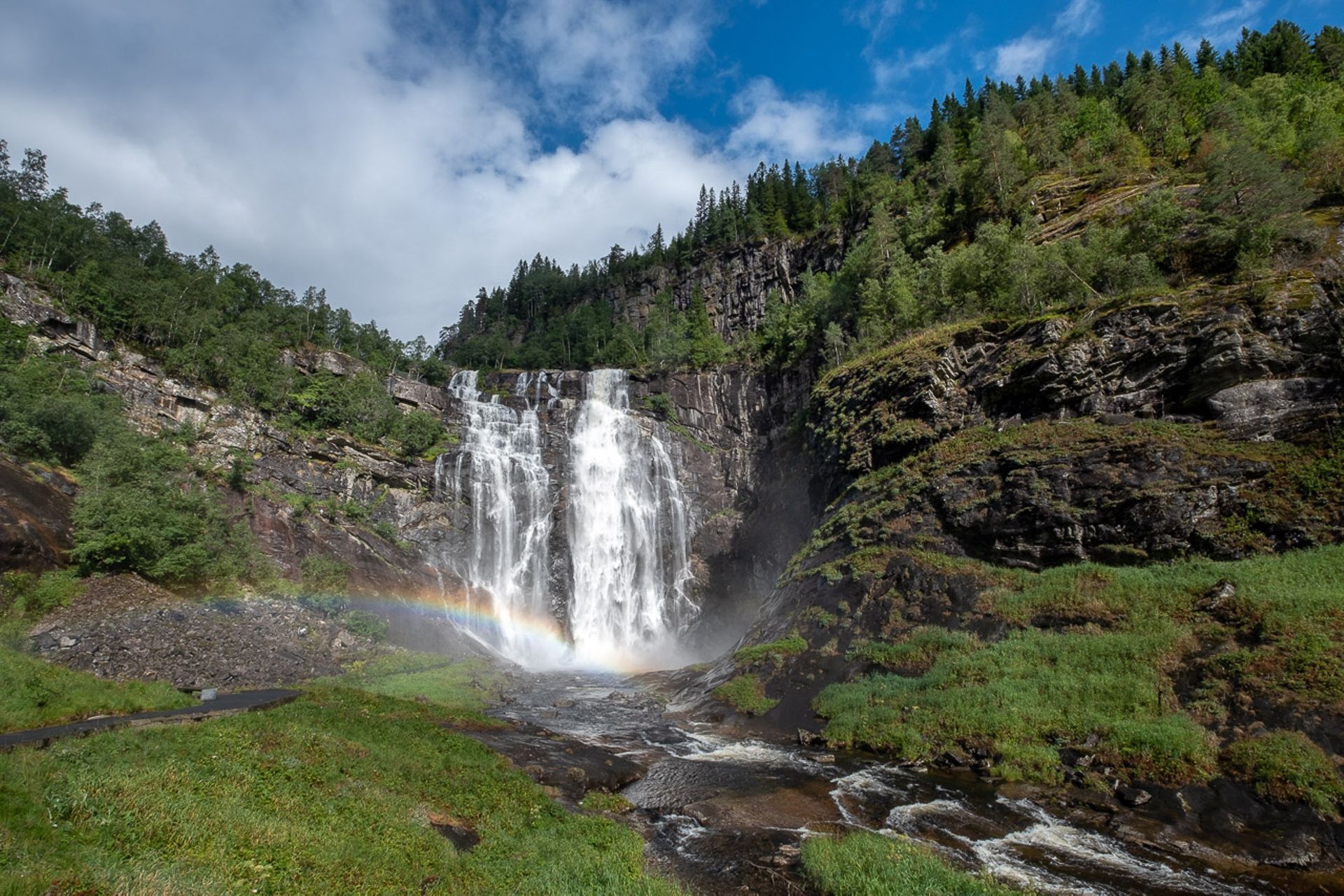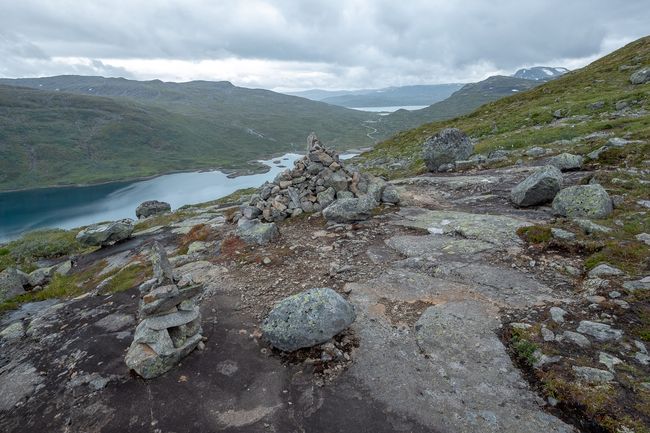Day 6 - To the Hardangerfjord
Diterbitake: 03.08.2018
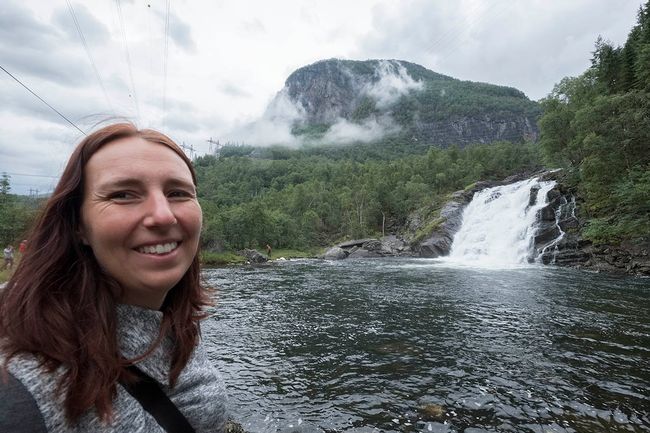
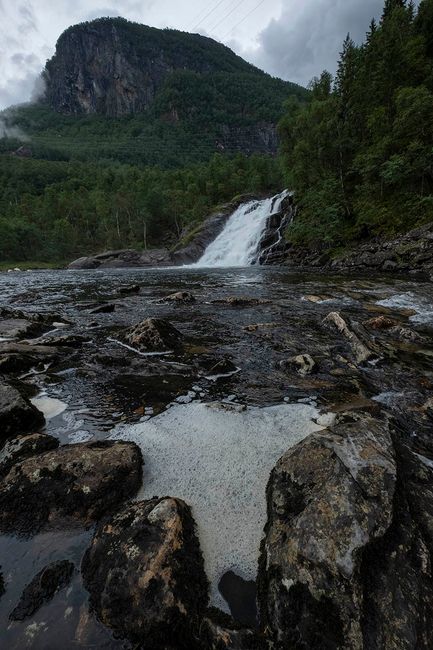
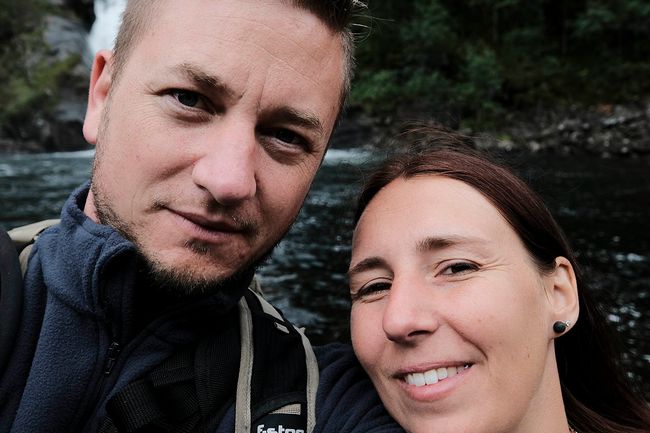
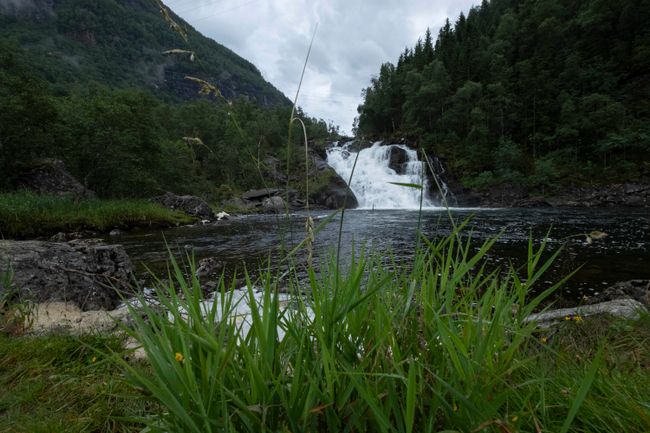
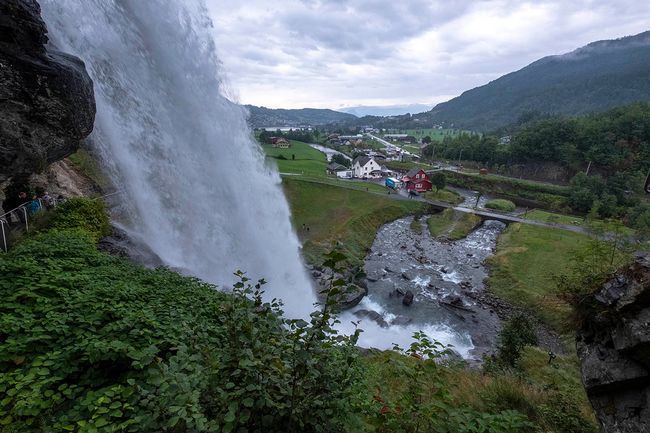
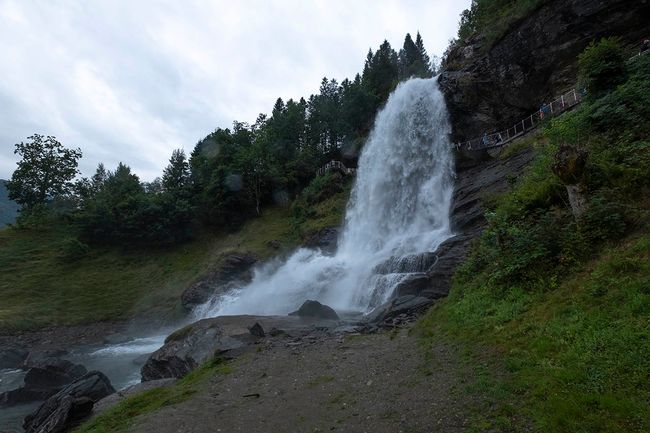
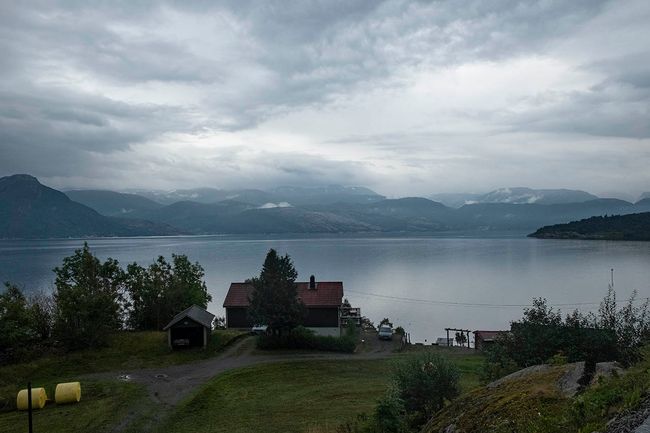
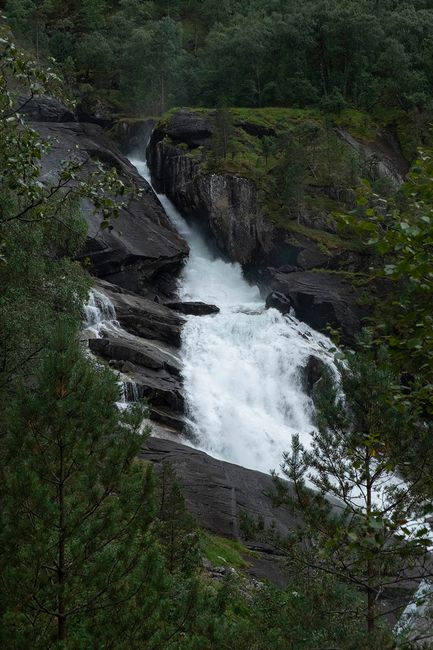
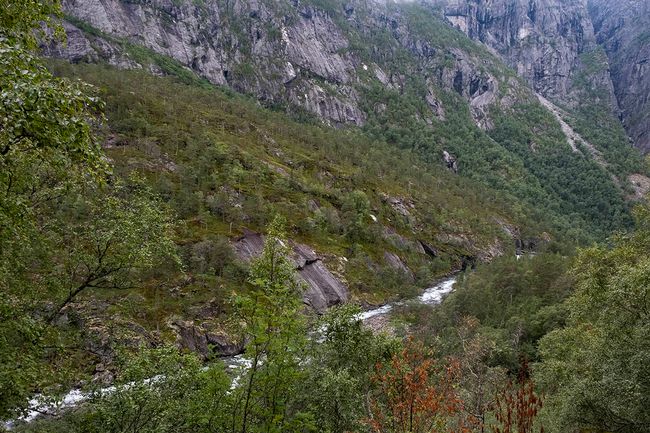
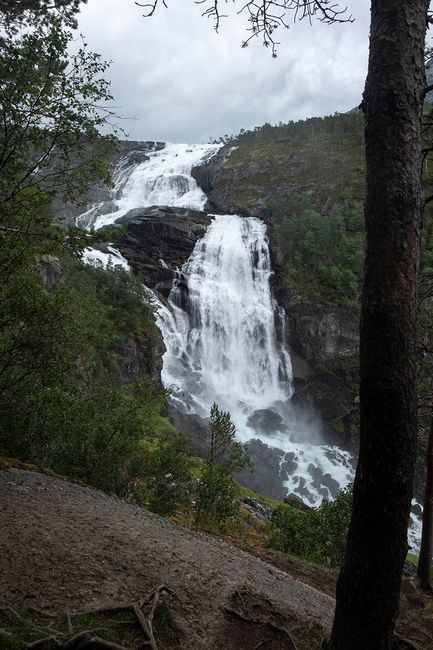
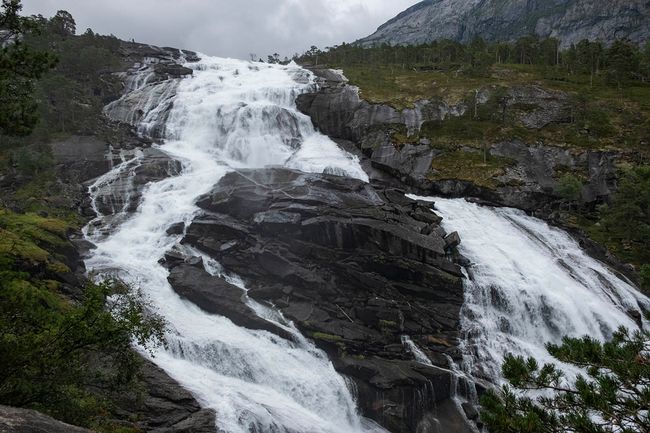
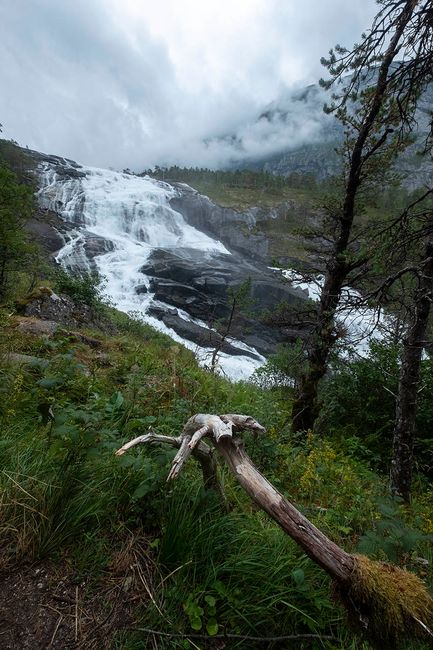
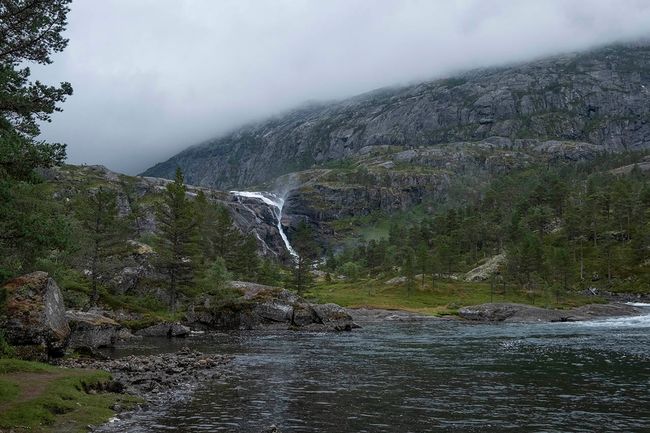
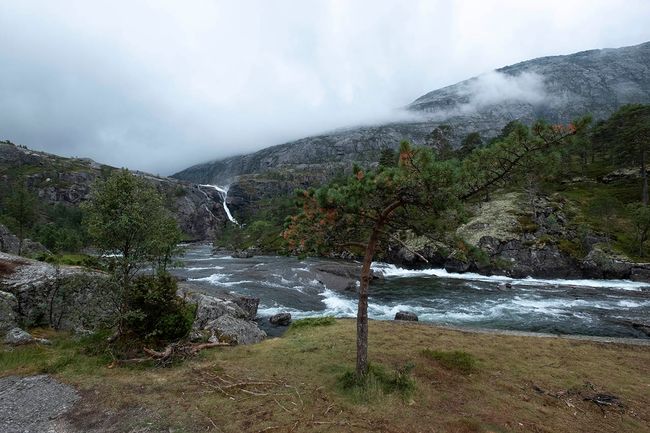
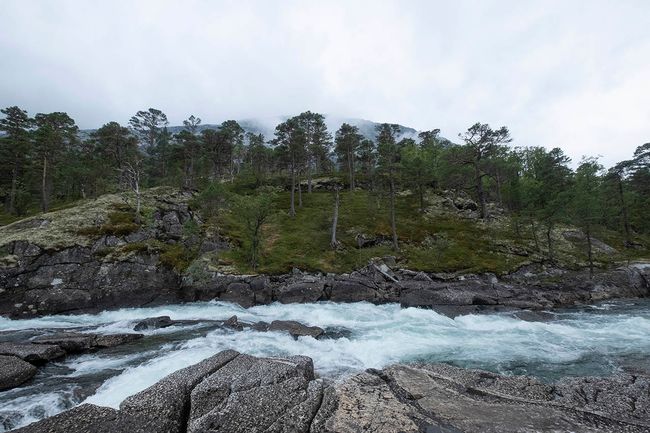
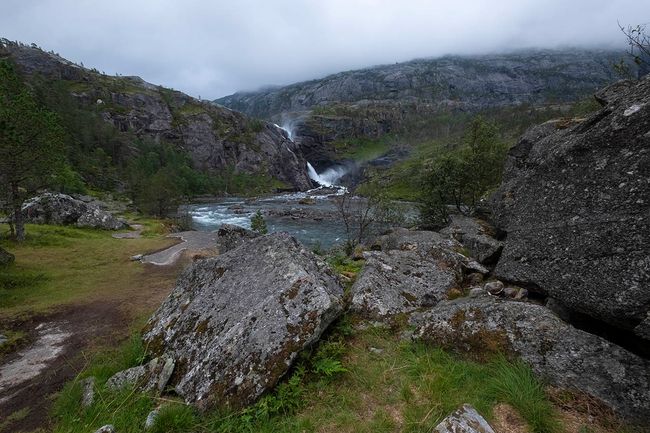
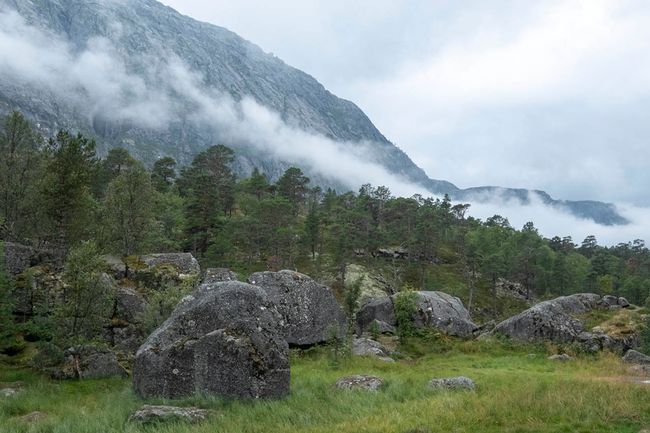
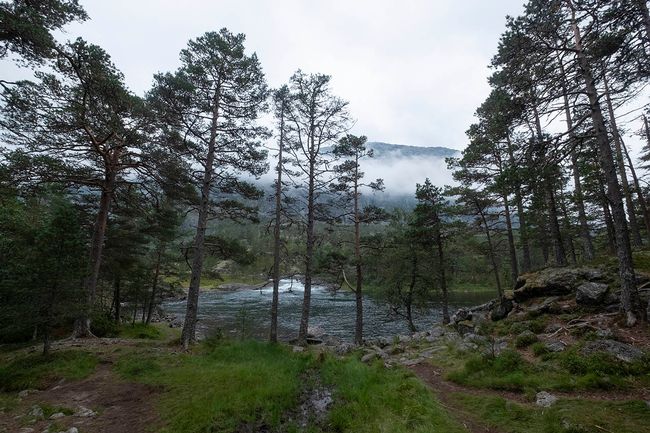
Langganan Newsletter
The next morning we set off again, heading east towards the Hardangerfjord, or more precisely, a branch of it called the Sørfjord. The route to the Hardangerfjord is an experience in itself, with a continuous ascent and steep towering cliffs full of mystique. After a short time, we see the first impressive waterfall. Soon, we reach alpine heights where we encounter 3 sheep (with collars) in the middle of the road. We assume they have escaped based on their lively gait. After a brief alpine interlude, we begin a rapid descent towards Norheimsund on a winding and tunnel-filled road. Just before this town on the Hardangerfjord, we pass by Steindalsfossen, a waterfall that you can walk behind. Of course, we stop to admire this natural wonder up close, even though it is quite touristy (but what else are we...). The bus driver of one of the tour groups that are present proudly shows us the super time-lapse function of his new phone, with which he captured the waterfall.
To reach Kinsarvik, our declared destination for this day, we cross the Hardanger Bridge. Or the "Golden Gate Bridge" of Norway, as some call it. But before that, we have to go through a tunnel that is extremely nerve-wracking due to its sheer length, bare rock walls, and sparse lighting, at least for me. I constantly feel like I'm about to fall asleep - not good when you're the driver. Just before we reach the Hardanger Bridge, the tunnel branches off in a roundabout in the mountain. I had never seen anything like it before. The gigantic hall for this roundabout is carved into the rock, with a column shaped like an upside-down cone in the middle. It's incredible what these engineers accomplish here. The tunnel ends with an equally gigantic portal and transitions directly into the bridge, which is 1380 meters long and 202 meters high. It is also a masterpiece of engineering.
Shortly after that, we arrive in Kinsarvik, where we settle down. The journey of just under 100 km took four and a half hours, including stops. You really don't get around quickly in this country, and that's actually a good thing.
In a fit of megalomania, we decide to go on a hike from there that is listed in the Rother Hiking Guide ("only" 9 km). It starts just above Kinsarvik and follows the Kinso mountain stream, which cascades down into the valley through several waterfalls. Each of these waterfalls is absolutely impressive, and we stand before them in awe. None of the photos can come close to capturing these dimensions, and they can only give you a glimpse of the sheer volume of water that plunges down every second. The path is steep and strenuous most of the time, and it becomes tough towards the end. However, all the efforts are forgotten when we reach the designated destination. We are greeted with a view of a valley that is bounded by another steep rock wall and another mighty waterfall at the other end. The rugged beauty of nature up there is so overwhelming that you feel like shouting "Thank you" out of happiness for being able to witness it.
Unfortunately, the approaching evening forces us to start the return journey. For me, it was one of those places that you never want to leave.
The descent is equally arduous, and the steepness of the terrain takes a toll on the knees. In the last third of the return journey, we come across a family with two young children who ask us if this is the right way to the next waterfall and how long it would take. Athletic, I think to myself, considering the onset of darkness and the children. Hopefully, they made it there and back safely.
Langganan Newsletter
Wangsulan (1)
Bernhard
toll, freuen uns auf Fortsetzung, Du solltest ernsthaft überlegen, unter die prof. Reiseberichterstatter zu gehen!